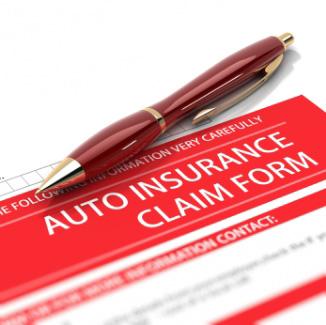Glossary of car insurance claim terminology
Tamara E. Holmes
If you’ve been in a car accident, your understanding of the car insurance claims process can be critical to getting all of the money you’re entitled to under the terms of your policy. But many policyholders don’t have a clue about the process, says Russell Longcore, author of “Insurance Claim Secrets Revealed.” If you fall in that category, here’s a primer to get you up to speed.
At-fault: The person found to be responsible for causing an accident. The method for determining who’s at-fault varies from state to state. For example, in Massachusetts, your driving behavior must be deemed more than 50 percent of the reason for the accident for you to be named at-fault. The insurance company of the driver who’s found to be at fault typically pays repair costs for both vehicles.
Claim: An official request made to your insurance company for reimbursement of expenses and damages resulting from an accident or another loss covered by your insurance policy.
Claimant: The person filing a claim with a car insurance company.
Claims adjuster: The person who works on behalf of your insurance company to investigate your claim and ensure that any compensation awarded is fair to everyone involved.
Claims handler: A claims handler is the central point of contact at your car insurance company who will ensure the claim is investigated and processed accordingly. The claims handler likely will take information from you about the accident and may coordinate among you, the claims adjuster and any other parties involved in the claim. The handler also will let you know when your claim is accepted and ensure that you receive the claim payment.
Claims process: The procedures for a policyholder to make an official request to his or her insurance company for reimbursement of expenses and damages resulting from an accident or another covered loss. During the claims process, the insurance company investigates the incident and the damage to determine how much, if any, it’s responsible for paying to the policyholder under the terms of the policy.
Covered loss: Any damage to property or injury to yourself or others that’s covered under your insurance policy.
Damages: The losses that occur as a result of an accident, collision, vandalism or other incident. Collision insurance covers damages from hitting or getting hit by another car or an object, regardless of fault. Comprehensive insurance covers car theft as well as non-collision damage to a vehicle.
 Deductible: The portion of a covered loss that you pay out of pocket before the insurance company pays the rest. With a deductible, you share the risk of paying for damages with the insurance company, so you can lower your insurance premiums by increasing your deductible.
Deductible: The portion of a covered loss that you pay out of pocket before the insurance company pays the rest. With a deductible, you share the risk of paying for damages with the insurance company, so you can lower your insurance premiums by increasing your deductible.
Diminished value: A decrease in the amount your car is worth once it’s been in an accident, even after the vehicle has been restored. This is a monetary amount that your insurance company may be required to pay, Longcore says.
First-party claim: A claim you file with your own insurance company in the case of an insurance loss. This is different from a third-party claim, which you file with another motorist’s insurance company when a loss has occurred.
Lienholder: The person or organization that holds a financial stake in the vehicle until it’s purchased or paid off. When a vehicle is financed, the lienholder is the finance company and its name appears on the certificate of title along with the owner of the vehicle. The lienholder also typically keeps the title until the vehicle is paid off; at that time, the title is signed over to the owner.
Non-OEM parts: Non-OEM parts are replacement parts that are not made by a car’s manufacturer and, as a result, tend to be less expensive. While your insurance company may agree to pay only for non-OEM parts when restoring your vehicle, you may decide to use OEM (original equipment manufacturer) parts and pay the difference in cost, according to the New Jersey Department of Banking & Insurance.
Paintless dent repair: A process for restoring vehicles that removes minor dents from a vehicle’s exterior without disturbing the finish or having to paint the vehicle.
Pre-loss condition: Insurance companies use the term “pre-loss condition” to describe a vehicle’s condition before damage occurred. If you file a claim, you want to make sure your insurer will pay to have your vehicle restored to pre-loss condition, Longcore says.
Subrogation: A process when an insurer recovers the amount it paid in damages from the insurance company of the at-fault driver. In other words, “you don’t have to try to fight the other guy’s insurance company. Your insurance company will fight them for you,” says Jack Hungelmann, author of “Insurance for Dummies.”
Third-party claim: A claim filed with another driver’s insurance company if that other driver is found to be legally responsible for the damages to your vehicle.
Total loss: Damage to a vehicle that’s so extensive that the cost of restoring the vehicle would exceed what the vehicle is worth.
